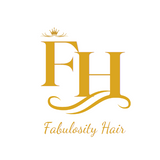Is it better to braid your hair under a wig?
Knotless braided wigs are an excellent method to change your style without having to cut your hair. They are also protective since your natural hair is shielded from daily manipulation and breakage by the braided wig. It's also a fantastic technique to determine whether you're a fan of a particular style before totally committing to it. Now, braided wigs exist at different price points, and while some are high-end, there are also excellent affordable options. The amount spent on one is entirely up to the wearer and is often determined by how frequently it will be worn.
Wearing a braided wig entails more than simply purchasing one and putting it on. You must determine how to wear it. Unless you are bald or have a small afro, you will need to decide how to style your hair beneath the wig. There is much more to it than merely brushing your hair back, as accumulating hair beneath the wig might result in breaking. Under the wig, hair must be protected, which demands planning and a suitable maintenance schedule.
Wigs are often regarded as one of the most effective methods of protecting our natural hair. Our hair is safeguarded from regular manipulation and breaking by the braided wig. Numerous styles of knotless braided wigs are available at a variety of pricing points in the vast hair market. While some prefer high-end, there are several excellent options available at a moderate price as well. However, it would help if you examined a variety of variables when purchasing a wig. Wearing a wig entails more than simply purchasing high-quality human hair extensions, as you must also determine how to wear it.

Braided Hairstyles
Unless you are bald or have a small afro, you must decide how to style your hair while wearing a wig. Some individuals may consider combing back their hair and gathering it into a ponytail. This solution, however, does not appear to work as it can result in hair breakage. There are several methods for preparing your natural hair for a new braided wig installation.
Is it Necessary to Braid Hair Underneath a Wig?
We will not use the term "have to" here because there are numerous options available to you for natural hair preparation. Braiding your hair is an excellent approach for preparing your hair for use with a wig. There are two primary braiding styles to select from. French braids and cornrows.
French Braids
Braiding your hair beneath a wig is a very common way to wear your hair beneath a wig. Even though braids are not as flat as other styles, they protect the hair, making them easier to manage for women. Additionally, it enables more straightforward access to the scalp for cleaning or moisturizing the hair. Braid the hair in small sections to reduce lumps or bumps beneath the wig.
Cornrows
Cornrows are a sort of braid in their own right. Among the several options, cornrows are the most popular way to wear your hair beneath the wig. Cornrows are similar to braids but allow for a flatter surface. Cornrow braided hair is safeguarded and is less likely to be thick or lumpy beneath the wig. Divide your hair into little rows from front to back and braid down the length of your head in this manner.
French braids and cornrows are both great if you have thick hair. These techniques also work if you're wearing a heavy wig and cannot secure hairpins in loose hair buns. Bear in mind that the braid should be as near to the scalp as possible, and the bulk of hair should be concentrated in the rear.
Make the Most of Hydrating Products.
Before braiding your hair down, use a moisturizing product. This method is also helpful for braiding out your hair before bed, leaving you with magnificent curls in the morning.
Applying this additional nutrient to your hair before putting on a wig allows it to absorb. Wear a silk wig hat over your cornrows to create a protective barrier between the wig and your hair, reducing friction and allowing the product to work correctly. Be certain that your hair has dried completely before applying the wig.
Keep it Relaxed and Loose.
Braiding your hair too tightly puts a lot of strain on the delicate strands. While keeping your braids secure and in place is necessary, you do not want to pull your hair too tight. If you do, you run the risk of developing traction alopecia, particularly around the sensitive hairline.
There are a few indicators that your cornrows may be too close together. If you experience discomfort or tension, the fit is excessively tight. Numerous stylists will braid as tightly as possible to guarantee your braids remain in place for an extended period. If you're wearing cornrows, take a warm shower to allow them to loosen and expand slightly.
If you're braiding your own hair down to put beneath a knotless braided wig, try to achieve a comfortable balance. It might be a delicate balancing act to braid your hair down to conceal it beneath the wig without causing yourself a headache.
Allow Your Hair to Breathe.
One of the most critical facts to learn about knotless braided wigs is that your hair requires space to breathe. Not only will you require a break from the wig, but you will also require a break from the braids.
If you're using a glueless wig for a protective style, you can take it off at night to extend the wig's life and allow your hair to breathe. It is not recommended to wear glued-down lace front units for more than six weeks at a time.
While it may seem implausible that protective hairstyles might cause damage to your hair, it does happen. When removing your braids, perform a short finger detangling and use this time to apply a deep conditioning treatment. Allow your hair to air dry or twist out for a few days before resuming the process.


Leave a comment